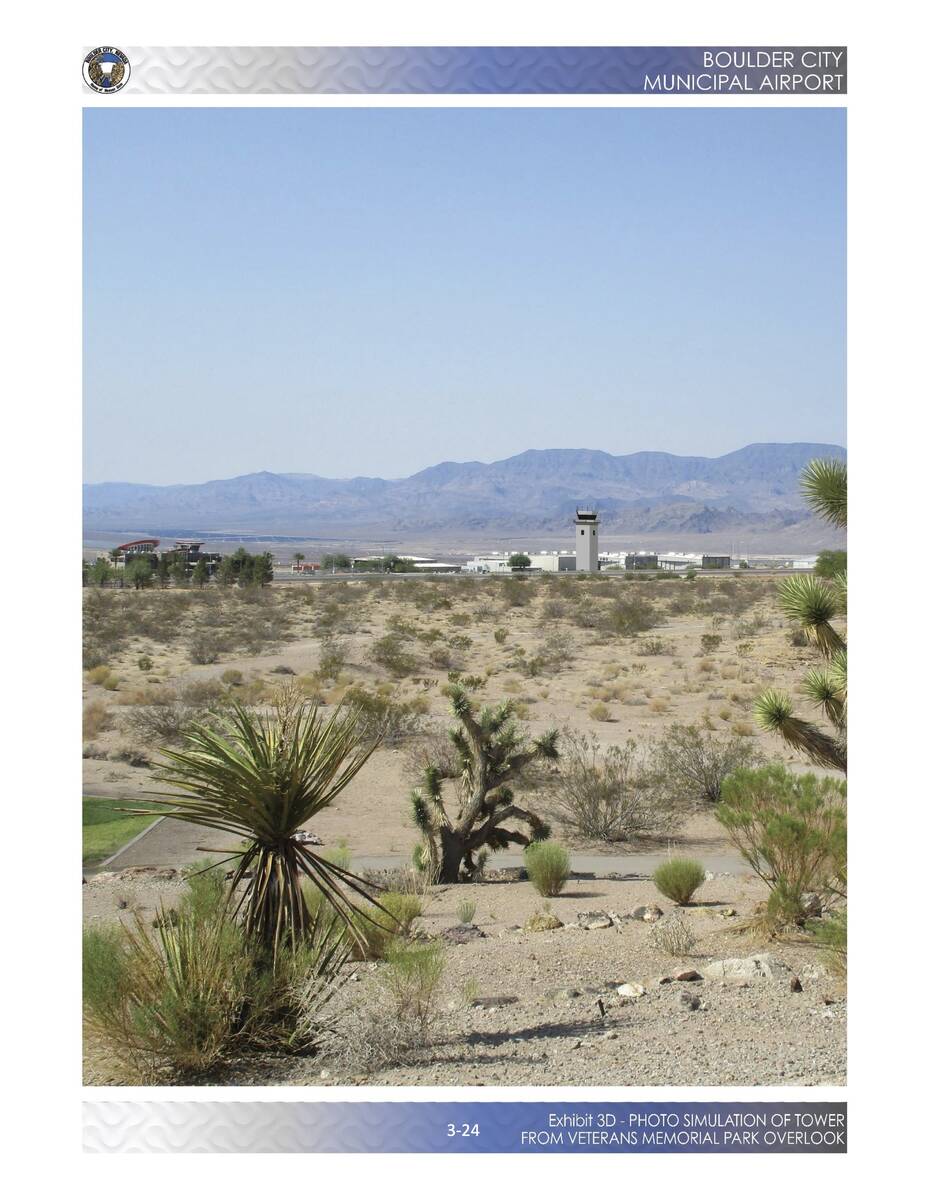Airport tower project takes a step forward
Plans to add a control tower to the Boulder City Municipal Airport took another step forward last week as the comment period for the draft environmental assessment prepared for the city and the Federal Aviation Administration came to an end on May 2.
The assessment was prepared by the airport consulting firm Coffman Associates. It will now be reviewed by the FAA along with any comments that have been submitted.
“Once they review, they will issue their findings, if any. If there are no findings then the city will continue with the design and construction of the tower,” said outgoing city manager Taylour Tedder.
The airport is busier than many people are aware of. In the 12 months that ended in May of 2023, there were more than 44,000 “enplanements” there. (An enplanement is defined by the FAA as a passenger boarding an aircraft at a specific airport.) If completed, the tower would be the culmination of a process that will have taken 20 years.
According to the draft assessment, “In 2007, the FAA Flight Standards Office conducted an airport ramp survey and safety analysis that included the following airport operational concerns:An increasing volume of arriving and departing traffic without an operating air traffic control tower.
The presence of a parachute drop zone on the airport mixed with constant fixed-wing and rotary-wing traffic.
The arrival of opposing fixed-wing tour aircraft requesting (on the common traffic advisory frequency) a straight-in landing in a tailwind configuration that is in conflict with the traffic pattern established by the airport.
Helicopter departures southbound from the ramp that are directly in front of fixed-wing aircraft that are on a stabilized final approach to Runway 27L.
Due to this “complex and increasing mix of rotor and fixed-wing traffic at the airport,” the FAA Flight Standards Office advised the construction of a control tower and strongly recommended that the city apply for an FAA program that would cover 90% of the cost of tower construction.
A cost/benefit analysis in 2009 indicated the benefits of a control tower in terms of averted collisions, other accidents, and efficiency at the airport would outweigh the costs of the tower.
The plan is to construct the tower and an office building northwest of the current main terminal building. The proposed site is across Airport Road, in the southeast corner of an area that currently serves as a parachute drop zone.
The site was chosen via a process that involved both the city and the FAA in 2022.
The planned tower would be 94-feet tall with a 640-square-foot octagonal “cab” at the top. A single-story 2,300-square-foot office space is planned at the base of the tower.
According to the city, funding for the proposed tower would be 90% covered by the FAA with 10% of the cost being paid out of the airport enterprise fund.
This is pretty standard for airport projects, although the amount of the city’s match can fluctuate depending on the type of project.
In fact, on some projects, the city’s cost ends up being effectively zero. For example, at the most recent city council meeting, the city approved accepting a state grant tied to a project rehabilitating one of the airport’s runways.
“The Rehabilitate Runway 15-33 and Electrical Improvement Project included a crack seal and surface treatment of the runway pavement and pavement remarking,” said Airport Manager Marissa Adou. “In addition, new LED runway edge lights and signs were installed. Two windsocks were replaced, new electrical ductbanks and electrical vault upgrades were completed. The project also included the installation of lighting for the transient apron. This project was completed in the spring of 2023.”
The FAA paid out more than $2 million for that project with the city’s matching commitment being $161,000. But the recently-accepted state grant covered that.
If all goes to current plan, construction and certification of the tower would begin in 2025 and take about 18 months total.
This would have the tower go into operation in 2027 —20 years after the FAA first identified the need for a tower.

















